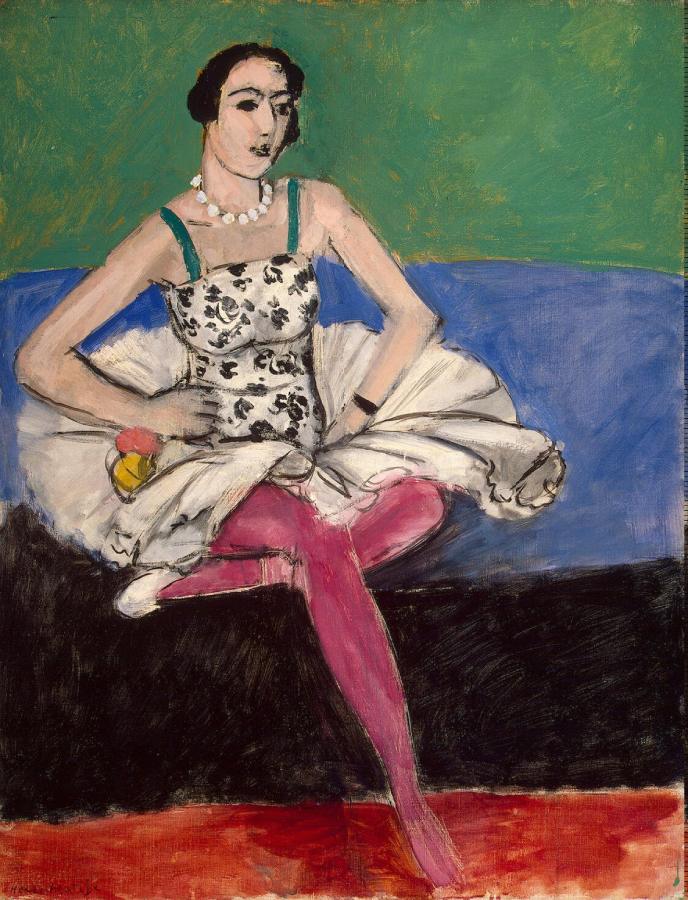Matisse, Henri (1869-1954)
Ballerina
c.1927
Oil on canvas, 65 x 50 cm
Hermitage Museum, Saint Petersburg
In 1920 Matisse became acquainted with 19-year-old Henriette Darricarrère, who became his model for the next seven years. The girl was a ballet dancer at the cinematic Studios de la Victorine and sometimes posed for a photographer. Matisse was attracted not only by Henriette‘s looks, her finely honed powerful body (it was no coincidence that she also posed for Matisse‘s sculpture), but also by her artistry. She was able to transform herself by turns into an Oriental odalisque, a passionate Spanish woman, a violinist, a pianist or a dancer. Matisse encouraged her pursuits of dancing, music and painting. The Darricarrère family lived in Nice, close to the artist’s studio. Matisse‘s interest in ballet grew in the years after the First World War, thanks to his contact with Diaghilev’s company. In his studio he had various coloured tutus that were used as props. But few of his models tried these costumes on, as they required the grace and professional skills that Henriette possessed. The painting Ballerina is remarkable for the exquisite simplicity of the treatment of colour and the compositional balance. The background is almost abstract: four horizontal stripes of different colours that set off the figure of the young dancer. It is hard to say exactly what Henriette is sitting on, but it is not that important. The figure is at one and the same time opposed to the background and connected with it by the chromatic echoes between the costume and various parts of the background. In 1927 Matisse painted Henriette twice more, but in 1928 she got married and stopped posing for the artist. (SHM)
See also:
• Darricarrère, Henriette (1901-?)
